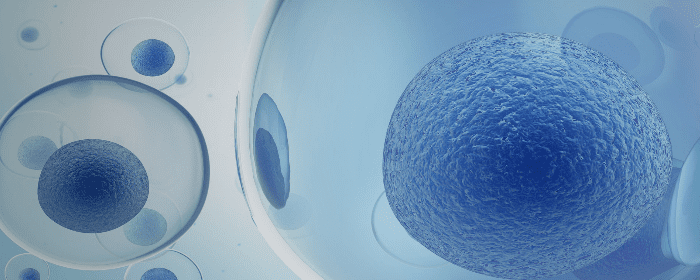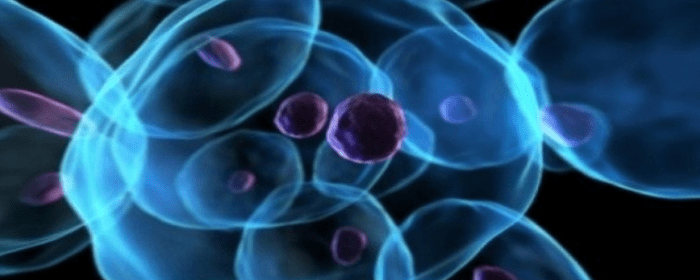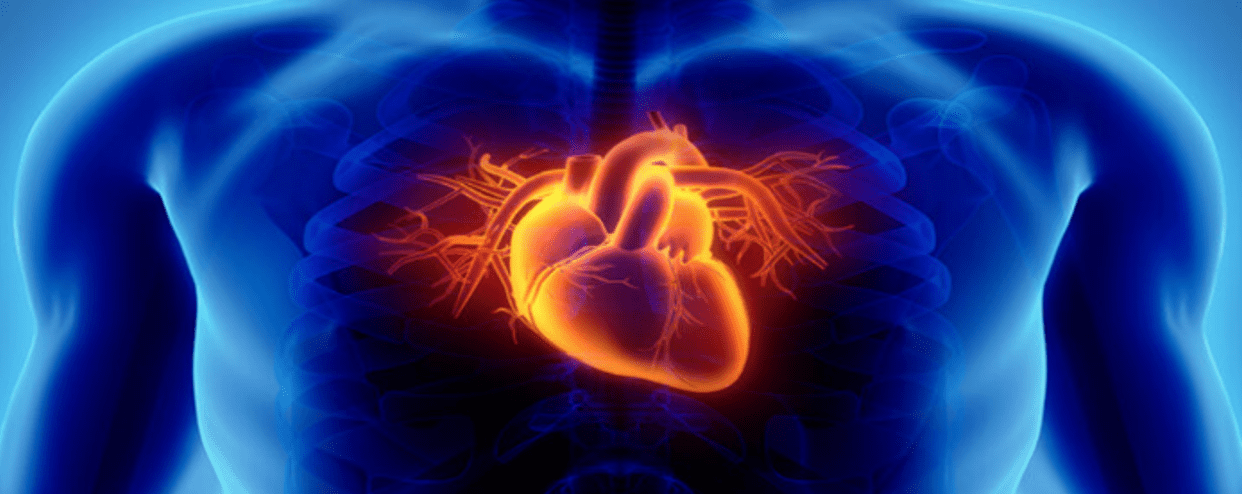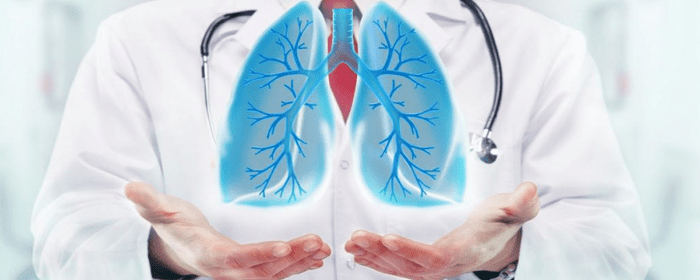
by admin | Dec 17, 2020 | Bone Marrow, Mesenchymal Stem Cells, Stem Cell Research, Stem Cell Therapy
The ability for bone to naturally repair fractures and other common injuries have been well documented. However, research has consistently demonstrated that as they age, bone loses its ability to heal, repair, and fend off various bone diseases. In fact, each year, in the U.S. alone, there are over 2 million fragility-associated fractures with associated healthcare costs exceeding more than $20 billion dollars.
Currently, non-stem cell bone healing therapies including estrogen and related agonists, recombinant parathyroid hormone, supplements such as vitamin D and calcium exist, but with limitations and a number of potentially serious side effects.
Considering that the incidence of fracture and the associate rate of morbidity increase with age, current research is now examining other therapeutic options for the structural and functional restoration of bone, including the viability and of tissue engineering applications such as mesenchymal stem cells (MSCs) and bioscaffolding as potential solutions for the structural and functional restoration of bone.
Stem cells are generally used therapeutically in three distinct ways, including 1.) freshly isolated stem cells transplanted directly into tissue and undergo in vivo differentiation to become a desired cell type; 2.) the stem cell can be manipulated in vitro prior to being implanted; or 3.) circulating endogenous stem cells are recruited by cytokines to facilitate cell proliferation, migration, adhesion, and differentiation.
As researchers continue to explore using MSCs as part of therapeutic bone regeneration, it is generally accepted that MSC bone marrow density and quality decrease with age. In addition, a factor in determining the effectiveness of MSCs related to facilitating tissue repair is the ability for the stem cells to be directed to the site of injury, a process more commonly known as “homing”. A recent study using mice has demonstrated that MSCs appear to lose their homing ability rapidly while young MSCs demonstrate better homing ability, especially when compared to old MSCs. Considering this, future research must consider the age of both donor and recipient when determining the effectiveness of this strategy.
In addition to stem cells, bioscaffolds are also considered an essential component of the bone regeneration strategy, serving as the reservoir for multiple factors, the carrier for cells, the filler for the void space, and the template for bone regeneration. The ideal scaffold for bone tissue engineering has been identified as:
- Showing no local and systemic toxic effects to the host tissue
- Supporting normal cellular activity
- Allowing cell adhesion, proliferation, extracellular matrix deposition, and inducting new bone formation
- Prompting the formation of blood vessels after weeks of implantation.
Considering the above, several substrates have been identified as potential bioscaffolds to support improved regeneration of bone tissue, including decellularized extracellular matrix scaffolds, synthetic scaffolds (calcium phosphate-based bioactive ceramic scaffolds; metallic scaffolds (including metal scaffolds coated with growth factors and other bioactive factors); hybrid scaffolds combining two or more materials (metal-ceramic-poly hybrid scaffolds); natural and synthetic polymeric scaffolds; and nanomaterial-based scaffolds.
As research continues to explore the possibilities of new therapeutic approaches to bone healing provided through various tissue engineering applications, the use of MSCs and bioscaffolds continue to demonstrate potential benefits. Among the key areas requiring further study is the need to develop vascularization in engineered bone material. Bone and bone tissue has a rich vascular supply; while the recent study has demonstrated nanomaterials as having the potential to promote vascularization (without the aid of growth factors), further research and clinical trial are required.
Reference: (2018, June 22). Bone Marrow Mesenchymal Stem Cells: Aging … – NCBI – NIH. Retrieved December 18, 2020, from https://www.ncbi.nlm.nih.gov/pmc/articles/PMC6733253/

by admin | Dec 3, 2020 | Exosomes, Mesenchymal Stem Cells, Stem Cell Research, Stem Cell Therapy, Stroke
Promising early research shows that when introduced into a brain injured by stroke, extracellular vesicles (EVs), also known as exosomes, a bioactive substance secreted by mesenchymal stem cells, have been associated with improved blood vessels creation, increased formation of neurons, and enhanced preservation of the neurological structure; these findings demonstrate a promising stem cell-derived stroke therapy that serves as an alternative approach to current stem cell infusion treatment options.
With nearly 14 million people suffering strokes each year, strokes continue to be the leading cause of physical disability among adults; between 25 percent and 50 percent of stroke survivors are left with significant and debilitating disabilities.
Because mesenchymal stem cells, or MSCs, secrete extracellular vesicles thought to reduce inflammation, enhance autophagy, and promote regeneration of damaged cells, researchers evaluating potential regenerative strategies for stroke-induced neurologic deficits have identified these MSC-derived EVs as a viable option for stroke therapy.
Although the reported beneficial effects of EV therapy has been observed in studies completed on animals, there is an increasing number of clinical studies currently being conducted on humans that suggest MSC EV stem cell therapy is a potentially safe and effective therapeutic option to improve outcomes in several various human applications.
Specifically, this EV-mediated therapy appears to offer an off-the-shelf treatment option that is potentially effective in crossing the blood-brain-barrier (BBB) while also avoiding cell-related problems, including the formation of tumors and infarcts resulting from vascular occlusions, or blood clots, consistent with those observed in acute ischemic stroke.
While there appears to be a promising upside to MSC EV therapy for the treatment of stroke, studies are on-going to discover the optimal therapeutic treatment of stroke patients. Some areas to continue researching are the optimal time and best mode of application of EVs in stroke patients (most stroke-related recovery occurs in the first few months following the stroke).
As research continues into the effectiveness of MSC-EV therapy for stroke, early indications are that EVs derived from mesenchymal stem cells could be a viable cell-free treatment option for patients recovering from a severe stroke.
Source: (2019, March 12). Mesenchymal Stem Cell-Derived Extracellular Vesicle …. Retrieved December 4, 2020, from https://www.ncbi.nlm.nih.gov/pmc/articles/PMC6422999/

by Stemedix | Nov 29, 2020 | Stem Cell Therapy
Coronary artery disease (CAD) is the most common form of heart disease and the leading cause of death in the U.S. The condition develops when the arteries which deliver blood to the heart narrow and harden, caused by plaque buildup in their inner walls known as atherosclerosis. Left unaddressed, this condition can lead to a complete blockage of blood flow, which can result in heart attack, stroke, or blood clot.
There are several existing treatments available for CAD, including medications for controlling blood pressure and cholesterol, lifestyle changes, and coronary artery graft bypass surgery. The surgical procedure involves using blood vessels from other parts of the body to bypass damaged ones. Angioplasty may also be considered, in which the plaque is removed from arteries using a small balloon to push plaque away.
An Alternative Approach: Stem Cell Therapy
While conventional treatments are generally effective for treating CAD, they don’t address the underlying issue of plaque buildup. Stem cells, however, may help to eliminate plaque.
According to experts, inflammation plays a key role in the creation of plaques in the arteries. With their powerful anti-inflammatory properties, stem cells could help to prevent inflammation, and thus plaque, from building up in the arteries in the first place. The cells also have immunosuppressive and anti-angiogenic properties, which can help to combat existing plaque buildup and prevent further plaque from developing. Research indicates treating heart disease with stem cells is safe and can provide strong therapeutic outcomes.
In one study performed in the Netherlands, patients who were treated with bone marrow-derived stem cells experienced symptom relief and improvement in pain, as well as extreme reductions in artery blockages. Researchers suspect the stem cells either helped with the development of new blood vessels or aided in the removal of plaque in existing blood vessels.
Although stem cell therapy has yet to be adopted as a standard treatment for Coronary Artery Disease, it’s possible that in the future, it could be an alternative option that helps reduce surgeries and hospitalizations, prevents major cardiac events, and enhances the longevity and quality of life of many patients.
Many conditions may benefit from this regenerative medicine option and it is being researched and considered to help manage condition symptoms. To see if you are a candidate, please complete a contact form for a complimentary assessment.

by Stemedix | Nov 23, 2020 | Rheumatoid Arthritis, Stem Cell Therapy
Rheumatoid arthritis (RA) is a chronic inflammatory condition in which the immune system attacks healthy joint tissue. This abnormal immune response leads to inflammation, fluid buildup, swelling, and discomfort in the joints. RA is a chronic condition for which there is no cure, and due to the progressive nature of the disease, symptoms often worsen over time.
Current treatments for RA involve controlling the immune response to prevent further damage and alleviating joint pain. Yet, oftentimes, existing therapies fail to mitigate the damage joints have already sustained. Some research has been finding that there may be potential therapeutic effects with regenerative medicine, also known as stem cell therapy for Rheumatoid Arthritis.
Stem Cell Therapy for Rheumatoid Arthritis
Stem cells are the building blocks of virtually all specialized cells and tissue in the body. They can transform into many different cell types, and have regenerative and anti-inflammatory properties. Medical researchers have been exploring ways to leverage these powerful cells to help manage symptoms for autoimmune conditions, including Rheumatoid Arthritis.
As the cartilage between bones becomes inflamed and wears away, the joint and surrounding bone can become damaged, too. Mesenchymal stem cells (MSCs) can develop into bone and cartilage tissue, and when isolated and injected into affected joints, could help repair damage caused by RA.
Since RA is an inflammatory disease, it can lead to health issues beyond joint damage. Systemic inflammation, fever, weight loss, muscle weakness, and diseases of the heart and lungs can also occur over time. For this reason, combatting the widespread inflammation that occurs with the disease is critically important. According to research, MSCs can control inflammation by increasing regulatory T cells (RTCs), which help to prevent the immune system from attacking healthy tissue.
Additional study results have shown significantly lower levels of blood markers which indicate RA at one- and three-year intervals after stem cell therapy. In these trials, patients received intravenous infusions of MSCs to treat the systemic inflammation associated with RA. In addition to reduced body-wide inflammation, patients also experienced a reduction in symptoms and improvements in physical function.
Although there still has yet to be a definitive cure for RA, stem cell therapy has been researched as a potential option to:
- Reduce joint inflammation and stiffness
- Increase range of motion
- Improve energy levels and reduce fatigue
- Minimize joint pain and swelling
For patients interested in exploring new treatment options, MSCs may enhance a patient’s quality of life and alleviate some of the condition’s most debilitating symptoms. Contact a Care Coordinator today for a free assessment!

by Stemedix | Nov 16, 2020 | Multiple Sclerosis, Stem Cell Therapy
Receiving a multiple sclerosis diagnosis can be overwhelming. It will inevitably lead to changes in your life, and there will be some days that are more difficult than others. Yet, you’re not alone in your diagnosis: roughly one million Americans are believed to have MS.
Fortunately, the condition and its symptoms can often be managed successfully. Treatments have come a long way since MS was first discovered, and they continue to evolve through developments such as regenerative medicine.
If you’ve recently received a multiple sclerosis diagnosis, here are some things you can do to begin taking control.
Familiarize Yourself with MS.
Oftentimes, it’s the unknown that can be particularly scary when it comes to a new diagnosis. By arming yourself with facts, you’ll have a better understanding of the characteristics of MS and what to expect. Sources like the National MS Society offer comprehensive guides for newly diagnosed patients to learn about symptoms, treatment options, and other need-to-know information.
Be Ready for Any Symptoms.
One particularly frustrating aspect of MS is that no two people experience the same symptoms in the same ways – which means that, even if you know what the condition can cause, you won’t know when to expect which symptoms, or how severe they may be. The unpredictable nature of the disease means that MS patients have to build some degree of flexibility into their routines. You may experience pain, numbness, fatigue, and vision changes which can come and go, seemingly without any pattern.
With that being said, keeping a journal may help you track your symptoms. It can shed light on whether treatments are working, and if there could be any triggers that you may want to avoid, such as going out during particularly cold weather. Becoming overheated, drinking alcohol, and stress are also common triggers.
Explore Treatment Options.
Promptly beginning treatment for MS could help you delay the disease’s progression. There are a number of medications which can modify the course of the disease, help you manage symptoms, and control relapses.
You may also want to explore lifestyle management techniques, such as physical therapy and stress management. Some patients also use complementary and alternative medicine techniques, such as yoga, dietary modifications, and massage therapy. Additionally, you might explore emerging options for regenerative medicine, including stem cell therapy, which could improve symptoms and potentially even aid in rebuilding myelin sheath tissue.
Partner With The Right Healthcare Professional.
Because MS is a chronic illness, you’ll want to find the right doctor for your needs. The original neurologist who established your diagnosis isn’t the medical professional you have to stick with; in fact, you should find a doctor who specializes in the treatment of MS. Consider looking for someone who is fellowship-trained, is actively involved in clinical trials and ongoing research, makes you feel comfortable and heard, and has an office atmosphere that puts you at ease. The Consortium of MS Centers is a comprehensive online database where you may want to begin your search.
Exploring functional medicine is also another alternative therapy option to help manage symptoms. Home comprehensive test kits help to find diet and vitamin deficiencies and insufficiencies you may have to help correct the causes of certain symptoms experienced. Stemedix offers these home tests provided by Genova Diagnostics.
Don’t Give Up.
A chronic illness diagnosis is major news to process, and it will affect you emotionally. Give yourself time to go through this emotional process and experience feelings like frustration and sadness. Yet, try not to give up hope. Know that MS research is constantly evolving, and that while existing treatments can delay the disease’s progression, as further treatments are approved, results will likely only improve in the future. Contact a Care Coordinator today for a free assessment!

by admin | Nov 12, 2020 | COPD, Stem Cell Therapy
Several recent studies have shown that adult stem cells, and specifically mesenchymal stem cells (MSC), appear to support the regeneration and protection of lung tissue, making them a very promising potential next-generation therapy option for the treatment of COPD.
Known treatments for COPD are designed to address symptoms and not the actual cause of the condition; considering that COPD continues to be among the leading causes of death among developed countries and that it’s considered to be a preventable and treatable disease there is a clear and compelling need to develop more effective therapeutic strategies.
As COPD develops, its inflammatory properties are characterized by the death of the epithelial cells, loss of the terminal air-space within the lung, and ongoing breakdown of lung tissue responsible for stability, elastic recoil, and other physiological functions essential for respiration.
Since the damage to these cells is permanent and not repairable, researchers continue to explore the use of MSCs as a potential option to repair and restore lung structure and lung function in people living with COPD.
Currently, any therapeutic-based COPD treatment option relies on the continued use of bronchodilators and/or corticosteroids to reduce the symptoms of COPD. While both of these drugs have been able to slow the worsening of COPD symptoms, the benefits appear to be ineffective as a long-term treatment option for even mild to moderate COPD.
Because of their capacity to induce growth of skeletal muscle cells, blood, fat, vascular systems, and connective tissues throughout the body, and since they seemingly have a capacity for self-renewal, MSCs are now being considered as a therapeutic treatment option for COPD.
In addition to their versatility throughout various cells, tissues, and systems, MSCs are relatively simple to isolate, they expand with high efficiency, are easily able to be processed and transported from the lab setting to point-of-use, and are highly compatible with different delivery methods and formulations currently being used by medical professionals.
Early research has also demonstrated that MSCs possess powerful immunosuppressive properties and are easily able to seek out and migrate to specific sites of tissue injury; this appears to be especially promising in the tissue of the lungs where not only have MSCs demonstrated the ability to suppress inflammation and growth factor production but also been found to reduce fluid retention within the lungs.
While these findings are promising, Phase II clinical trials to establish the use of Mesenchymal stem cells as a therapeutic treatment in patients with severe COPD are currently ongoing. Specifically, this trial is examining how effective MSCs derived from normal healthy adult donors in the treatment of COPD.
Although further study is required, early indications show promise that stem cell therapy, and specifically the use of MSCs, could be a very effective therapeutic treatment option in patients with moderate to severe COPD.
Reference: (n.d.). Mesenchymal stem cell therapy for the treatment of … – PubMed. Retrieved November 25, 2020, from https://pubmed.ncbi.nlm.nih.gov/20384521







 St. Petersburg, Florida
St. Petersburg, Florida
